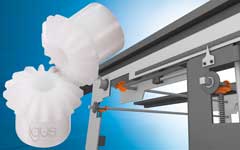Roller chain for the high demands of food technology
- Details
- Hits: 11684
Are roller chains in the Food industry used, they have to withstand high loads or be serviced and replaced regularly. Put users a quality roller chain from Tsubaki they have a service life that is twice as long as comparable chains on the market. They also drastically reduce maintenance to the point of being maintenance-free. This is ensured, among other things, by oil-impregnated sintered bushings and the patented stamping ring compression. Find out some product information and find out more about the Roller Chain, also based on Success Stories.

Contents
- Replacing roller chains increases productivity at the pizza maker
- Winemaker shortens downtimes in the bottling process with roller chain
- Roller chain makes beverage production more reliable
- Roller chain increases service life from 2 to 5 years in large bakery
- Low-maintenance roller chain as an alternative to expensive lubricants
- Tray packer roller chain protects packaging from contamination
Replacing roller chains increases productivity at the pizza maker

01.03.2023/XNUMX/XNUMX | A French pizza maker approached Tsubaki with a desire to propose a roller chain that would reduce maintenance and overall costs. A roller chain is an integral part of this pizza maker Drive in a conveyor system. This transports the packaged pizza to a refrigerated repository, from where it is distributed to the retailers. Because most products are delivered to supermarkets, profit margins are tight. The pizza maker must therefore maximize productivity as well as quality.
The function of the conveyor chain is crucial in order to transport the product quickly and efficiently to the dispatch without damaging the packaging or the pizzas. A maintenance team had to so far every three days the default chain check for elongation. Meanwhile, the plant was idle. The chain elongation also led to an uneven movement of the conveyor belt and thus increased the risk of failure. If there was slippage or vibration in the conveyor, the pizzas could be damaged or become unevenly aligned on the conveyor. This had a negative impact on the subsequent packaging process. If there was even a machine failure due to chain wear, the pizza manufacturer had to put up with even longer downtimes.
Replace the roller chain every three months
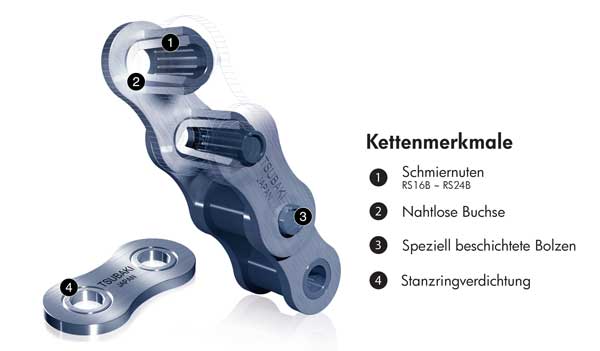 Despite careful maintenance and adjustment as well as regular lubrication, the roller chain had to be replaced every three months. After that more than For 15 years was practiced, the management made a comparative calculation with the result that the investment in a high-quality roller chain compensates for the costs for downtime and maintenance due to the previous frequent replacement of the standard chain. The test run with a quality GT4 Winner roller chain from Tsubaki finally demonstrated that productivity could be increased and total cost of ownership reduced.
Despite careful maintenance and adjustment as well as regular lubrication, the roller chain had to be replaced every three months. After that more than For 15 years was practiced, the management made a comparative calculation with the result that the investment in a high-quality roller chain compensates for the costs for downtime and maintenance due to the previous frequent replacement of the standard chain. The test run with a quality GT4 Winner roller chain from Tsubaki finally demonstrated that productivity could be increased and total cost of ownership reduced.
“We offer a wide range of chain sizes and chain configurations. We were therefore able to replace the original chain directly and thus demonstrate a significant reduction in elongation and a longer service life,” says Jake Yamamoto, Sales & Marketing Director of Tsubakimoto Europe. “The roller chain characteristics, proven through a highly robust testing process, have demonstrated that an investment ultimately reduces the total cost of ownership and helps increase the pizza maker’s productivity.”
Features of the GT4 Winner roller chain
Patented lubrication grooves ensure that chain elongation due to wear is reduced. These ensure effective and long-lasting lubrication of the chain joint. This reduces maintenance and increases the service life of the roller chain. Thanks to the specially shaped lubrication grooves, the lubrication between the pin and bushing is kept where the highest friction occurs instead of being distributed. This feature minimizes chain wear and chain elongation.
The roller chain from the GT4 Winner brand also differs from standard roller chains in that it has one patented stamping ring process the locking tab. This means that the connecting link, as the weakest link, is just as strong as the ground chain. A stamped ring is placed around the tab eye by strain hardening. The resulting internal stresses increase the strength of the pin-plate connection. The roller chain can thus be designed for its full performance.
 Efficient gear wheel perspectives made of high-performance plastic
Efficient gear wheel perspectives made of high-performance plastic
Once installed, the GT4 Winner far exceeded the three month life of the standard chain and had to only after 18 months be readjusted. However, due to the longer service life of the Tsubaki roller chain, there was a problem with corrosion. Because the original standard chain was not in use long enough to become susceptible to corrosion at all. To avoid the new side effect, a Neptune roller chain with an anti-corrosion layer was selected. Due to its carbon steel base, it has the same strength and wear resistance as the GT4 Winner.
“The Tsubaki Neptune chain is now up and running too corrosion-free. After her first hire at 18 months, she can serve the plant for many additional months,” adds Jake. "The pizza maker's maintenance staff are confident that investing in precision-machined roller chain has definitely paid off economically, reducing their maintenance and overall budget."
Winemaker shortens downtimes in the bottling process with roller chain
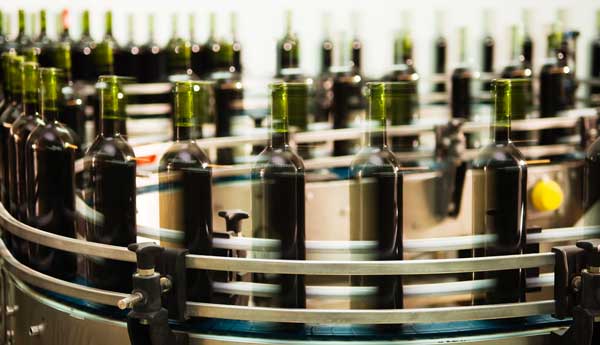 11.05.2022/XNUMX/XNUMX | A German winemaker used at the wine bottling a series of conveyor belts that carry the bottles through the production process. Now he has been able to improve his productivity in transporting the bottles by replacing the conventional conveyor chain with a corrosion-resistant Neptune roller chain from Tsubaki. Downtimes and maintenance costs are reduced, the service life increases.
11.05.2022/XNUMX/XNUMX | A German winemaker used at the wine bottling a series of conveyor belts that carry the bottles through the production process. Now he has been able to improve his productivity in transporting the bottles by replacing the conventional conveyor chain with a corrosion-resistant Neptune roller chain from Tsubaki. Downtimes and maintenance costs are reduced, the service life increases.
The winemaker operates a system at the end of which the bottles are buffered. on one Spiral conveyor they are collected. This spiral conveyor is driven by a roller chain. Previously, the chains corroded quickly in the wet environment. Because they are also subject to high friction, their lifespan was short.
The roller chain is difficult to access for maintenance. Relubrication is also difficult due to the wetness. Due to corrosive conditions and irregular lubrication, the Spiral Elevator roller chain had to be replaced every two years. The increased downtime due to the difficult access and the high procurement costs caused high downtimes, which reduced the productivity of the winemaker.
After replacing the old conveyor chain with the Neptune quality chain, the wine producer was able to Total cost of ownership (TCO) significantly lower. The Neptune chain was specially designed for use in corrosive environments. Now it has clearly exceeded the previous two-year service life of the standard chain.
Surface treatment makes roller chain durable
The high durability of the Neptune chain is due to an innovative Surface treatment, which ensures high corrosion and chemical resistance. The coating withstands alkaline detergents, salt water, acid rain and other adverse weather conditions. The Neptune has been tested for 700 hours in salt water spray and 2000 hours for resistance to sodium hypochlorite and caustic soda. Both are often used as cleaning agents in the food and beverage industry
 Clutches and brakes Use in food technology
Clutches and brakes Use in food technology
Tabs, bushings and bolts feature two special layers including a resin layer. These provide maximum protection against wear and tear. The roller chain is also resistant to temperature changes and tolerates excessive moisture.
Users are spared the concessions of other corrosion-protected chains such as stainless steel versions when using the Neptune. Out of carbon steel It offers the same tensile strength and allowable load as Tsubaki's heavy-duty standard roller chains. The special coating also protects against friction, which accelerates chain wear. This is achieved because the strong dynamic contact between sprocket and roller is minimized.
The RoHS Compliant Roller chain is free of hexavalent chrome and other hazardous elements such as arsenic, lead, cadmium and mercury.
Roller chain makes beverage production more reliable
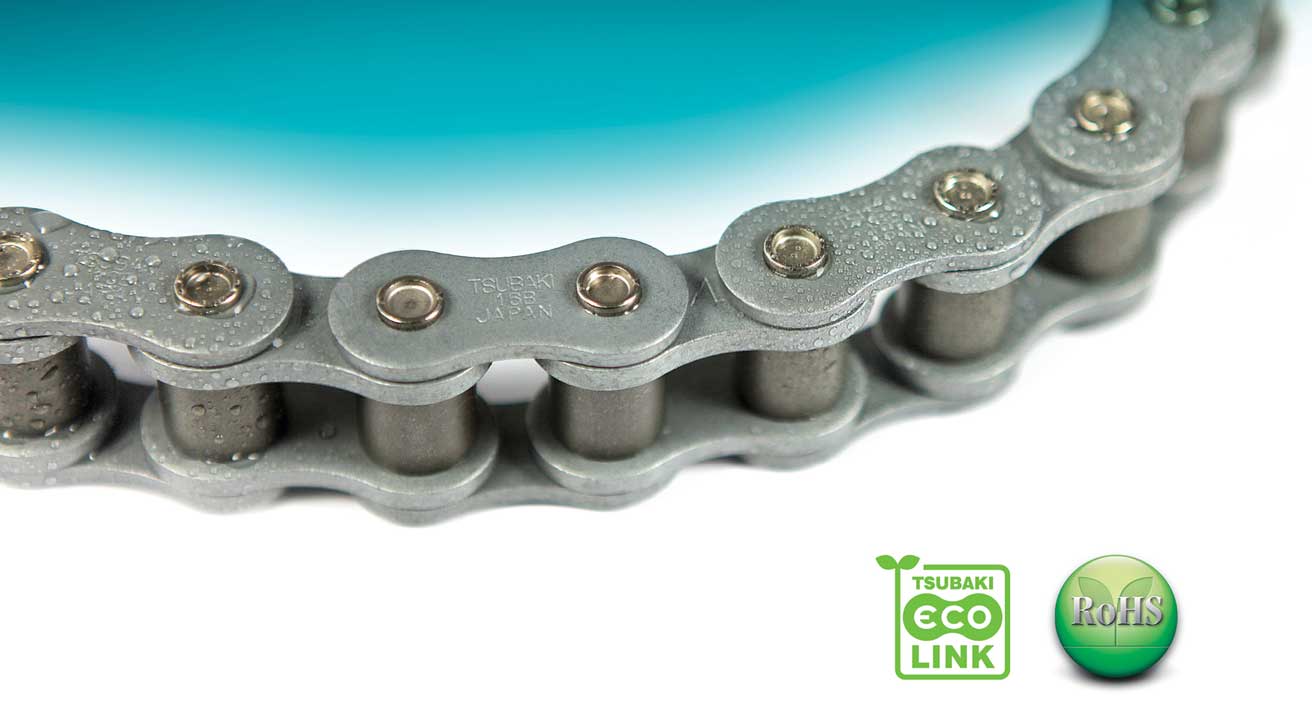
26.04.2022/XNUMX/XNUMX | With the ever-growing demand for beverages worth billions of dollars, manufacturers must use highly reliable machines in their production to be able to meet the demand. A Beverage producer in the Netherlands looking for a reliable drive chain, turned to Tsubaki, who suggested a special roller chain.
In 2018, sales in the beverage industry increased worldwide $1544,61 billion rated – and the trend is rising. The industry relies on technologically advanced production lines and cold chain facilities to meet this need profitably. In addition, the beverage manufacturers must also comply with hygiene standards. Chemical high-pressure flushing systems reduce the risk of product contamination. However, their use may have an adverse effect on the components and machines that are not specialized for these environmental conditions. Power transmission components such as conveyor or roller chains in conveyor systems are particularly at risk here.
In such a chain type, chemical ones can occur high-pressure flushing cause corrosion on their surface. This promotes early chain wear. If the roller chain fails prematurely, it brings the entire production line to a standstill. This increases the total cost of ownership (TCO). In addition, rust that develops on the roller chains also poses a risk of contamination for the product itself. Optimized conveyor chains reduce the risk here and ensure continuous production.
Reliably prevent corrosion of the roller chain
This happened to a Dutch beverage manufacturer: He complained about increased wear and tear on a low-maintenance stainless steel chain, which is installed on the drive of a bottle conveyor. The conveyor roller chain was washed weekly with an alkaline detergent. After some time, the low-maintenance corroded driving element and started to wear out. With this problem, the manufacturer turned to Tsubaki to find a solution to their needs.
The drive specialist has a whole range of conveyor chains for specific applications in its portfolio. For the beverage manufacturer's specific application, engineers recommended the Neptune roller chain. It is very suitable for Use in bottle conveyors. With a special Surface treatment withstands those alkaline cleaning agents, salt water, acid rain and other adverse weather conditions. Bushings, brackets and pins have two special layers and thus provide maximum protection against wear. In addition, the roller chains are resistant to temperature changes and can withstand excessive moisture.
The low-maintenance version is now specifically used Lambda Neptune type RS12B-1. The design-related increased corrosion resistance of this type of construction immediately improved the reliability of the drive. This increases the service life and the maintenance intervals. In addition to the quality roller chains, a competent service is of course also available to advise the customer.
Roller chain increases service life from 2 to 5 years in large bakery

05.04.2020 | In a French bakery, the oven for baking rolls required a new one every two years conveyor chainbecause it was worn out by then. To stop the expensive and time-consuming process, those responsible turned to the manufacturer of drive technology products, Tsubaki. After replacing the conveyor chain, the service life of two years became more than five years.
Almost every village in France still has its own boulangerie or bakery, which has been passed down through generations of their artisan families. Today, these bakers combine tradition with technology to create the finest baked goods. If larger bakeries supply supermarkets in their region, for example, they have to open high quality standards and set short delivery times. However, they can only achieve this if they rely on efficient and cost-effective technology for their devices, machines and processes.
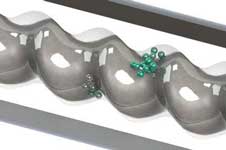 Hygienic dosing systems for precise spreads
Hygienic dosing systems for precise spreads
When such a bakery put its costs and processes to the test to ensure the high quality standard of its production line, it turns out that the tunnel oven for the production of bread rolls has a downtime for the every 1,5 to 2 years Exchange of the conveyor chain needed. The machine had to be completely dismantled to replace it. That was very expensive. And so those responsible asked themselves how the service life of the chains could be increased.
Average ambient temperature of 240 ° C
 The managers contacted Tsubaki and the engineers were quickly on site to evaluate the application. They realized that because of the high temperatures of an average of 240 °C and a maximum of 300 °C, to which the roller chain is exposed during the baking process, the inside of the rollers and the inner link wear out too quickly. The result was that the drive chain was damaged sooner than desired.
The managers contacted Tsubaki and the engineers were quickly on site to evaluate the application. They realized that because of the high temperatures of an average of 240 °C and a maximum of 300 °C, to which the roller chain is exposed during the baking process, the inside of the rollers and the inner link wear out too quickly. The result was that the drive chain was damaged sooner than desired.
Tsubaki engineers are professionals in the field Total Cost of Ownership Reduction. And so they also know that a conveyor chain's operation in heavy-duty environments can be improved with a special lubrication system.
To solve the problem, the specialists recommended a technical solution from their large conveyor chain catalog. The new conveyor chain from the DT series has heat-treated rollers and bushings. These ensure smooth interaction even at these high temperatures.
In addition, they have been designed for strength and performance to withstand regular use. The Bakery should break the chains with one Special food grade lubrication provided, which works reliably even at very high temperatures. An electrically operated gear pump, which is synchronized with the speed of the roller chain, takes over the correct dosing of the lubrication. In this way, it always provides them with optimal lubrication.
After installing and commissioning the DT chain with its tailored lubrication system, the maintenance staff at the bakery quickly registered one performance increase. Where the conveyor chain previously wore out in just a few months, the new DT chain quickly shows visible improvements.
It is far more durable than that of the incumbent operator of the previous chain. In fact, she even turned out to be more than twice as reliable and eventually reached a lifespan of over five years. The resulting reduction in TCO had a direct impact on the bakery's bottom line.
Low-maintenance roller chain as an alternative to expensive lubricants

12.06.2019/XNUMX/XNUMX | In food processing machinery, it is important that the lubricants used on the components inside are suitable for human consumption. However, these are very expensive. Tsubaki has with the Lambda roller chain and their bushes provided with a special lubricant are an alternative.
“One of the main principles of product safety in food production is ensuring the use of ingredients that are safe for us humans. No visible foreign bodies or trace substances that are difficult to recognize but are harmful to health must get into the end product Peter de Block, Head of Sales EMEA at Tsubakimoto Europe BV, the problem.
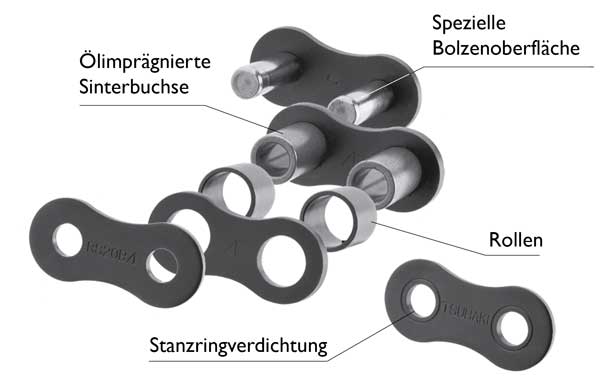 Of course, this also applies to the production of food. Such a potential trace material is, for example, oil or grease used to lubricate the components in the production machines. However, it is sometimes inevitable that some lubricant will get into the finished food products. Therefore, the machines must be lubricated with lubricants that safe for human consumption are.
Of course, this also applies to the production of food. Such a potential trace material is, for example, oil or grease used to lubricate the components in the production machines. However, it is sometimes inevitable that some lubricant will get into the finished food products. Therefore, the machines must be lubricated with lubricants that safe for human consumption are.
Manufacturers of lubricants produce specially designed quality products, the use of which is regulated by laws and industry standards. These regulations vary from country to country. Basically there are the following three categories of lubricants, which may be used in the food industry:
Lubricant categories for the food industry
- H1 lubricants may accidentally come into contact with the food produced and must not be harmful.
- H2 lubricants must not come into contact with the food and may only be used in closed systems.
- H3 soluble oils may be used to clean or operate equipment or machinery that comes into contact with food, but must be washed before use.
Because special lubricants for the operation of its drive chains in the food industry are expensive, Tsubaki with the Lambda chain developed an alternative: This drive or conveyor chains have been equipped with a self-lubrication function that is designed for permanent lubrication. It therefore no longer needs to be relubricated during its entire service life.
With the Lambda roller chain, the drive specialist launched a chain lubricated for life for the first time thirty years ago. In the meantime, this has almost become a reality for many applications industry standard developed. Over the years, the developers have constantly developed them further and incorporated the growing know-how into the design.
Structure of the food-lubricated chain
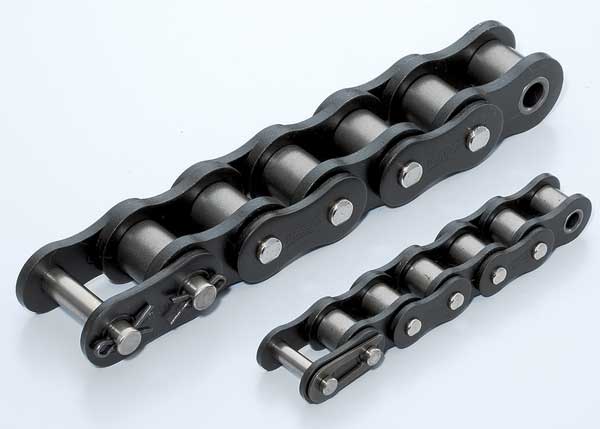 The core concept of Lambda design is the use of a oil-impregnated sintered bush. It ensures that the chains lubricate themselves over their entire service life. Most of the lubricant remains in the roller chain, so there is no contamination of products, packaging and other items.
The core concept of Lambda design is the use of a oil-impregnated sintered bush. It ensures that the chains lubricate themselves over their entire service life. Most of the lubricant remains in the roller chain, so there is no contamination of products, packaging and other items.
“The Lambda chain already exists in the sixth generation. As standard, it is lubricated with the food-grade lubricant "NSF-H1", says Peter de Blok. "However, we can also implement H3 oil impregnation on request." The Lambda chain is designed in such a way that it withstands moderate rinsing procedures during the cleaning process at temperatures of up to 150 °C. Versions for use at higher temperatures are optionally available.
The patented ring compression The lambda chain significantly increases its strength and resistance to breaking force. Breakage points on the connecting links are now a thing of the past. This process creates significantly higher fatigue strength around the bolt eye of the locking tab. In addition, the machine element can be assembled quickly and easily.
The lambda chain is complete with Standard BS roller chains interchangeable and can therefore be used in existing machines without modification. The same applies to using the standard BS sprockets. Nevertheless, the manufacturer recommends installing sprockets with hardened teeth, which give the roller chain an even longer service life.
Tray packer roller chain protects packaging from contamination
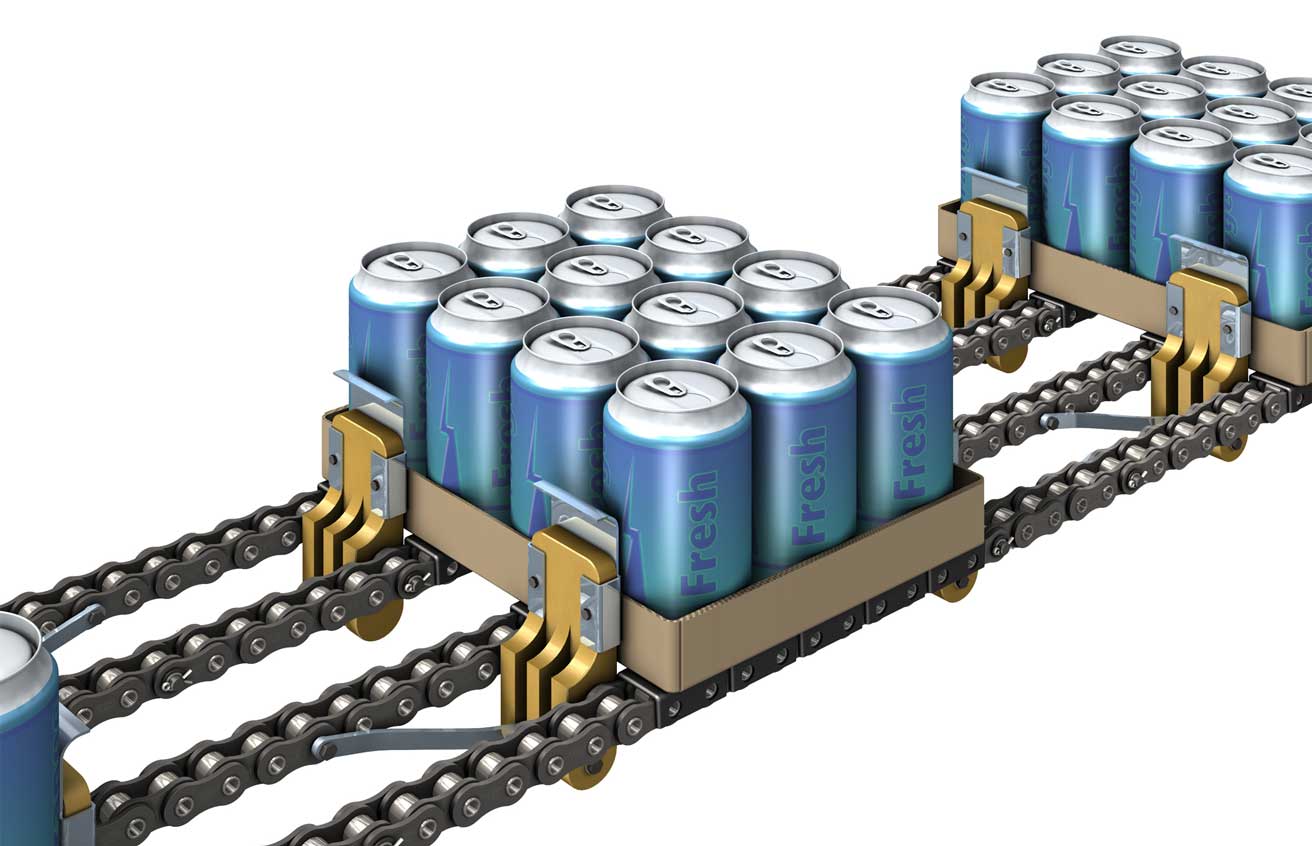
17.03.2017/XNUMX/XNUMX | The feeding of folding boxes in the food and beverage industry to the products takes place in so-called Tray packer units by roller chains with special carriers. The Tsubaki tray packer roller chain does not have a lubrication system here, thus eliminating product contamination from lubricants. This roller chain is based on the low-maintenance Lambda chain, which permanently lubricates the chain joint from the inside with an NSF-H1 food-grade lubricant via an oil-impregnated sintered beech.
In the food and beverage industry, tray packaging machines hold finished products in suitable folding boxes or cartons to form so-called multi packs together for the collected onward transport. The products must then be flawless and clean. Typically, this packaging step uses roller chains that need to be lubricated regularly.
Prevent entry of dust when set down on the chain
It can happen that the product or the packaging unit is wetted with lubricant. In addition, those affected by lubricants have an effect Machine Elements like this roller chain like one Staubmagnet, so that dust generated by the carton packing process can settle on the chain. In addition to the visually dirty impression, which is particularly unacceptable in food packaging, contamination can also reduce the service life of the chain.
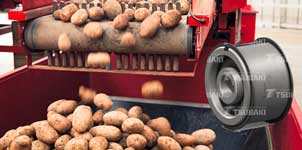 Potato harvester reliable again after conversion from freewheel
Potato harvester reliable again after conversion from freewheel
This allows dust to settle on the chain and into the chain joint penetration. That would disturb the lubrication in the chain joint, which in turn promotes chain wear in the chain joint. On the other hand, the dust can clog the chain in such a way that the necessary relubrication with new lubricant cannot be ensured. The lubrication itself requires regular maintenance intervals or an automatic lubricant supply - both of which cause costs.
Oil-soaked sintered bushes lubricate from the inside out
So the less lubrication that takes place in the process, the better. If you do without lubrication entirely, there is a risk that the chain joints will stiffen or that the chain strands running in parallel will stretch unequally. Production errors and an early replacement of the chain would be the result. With the tray packer chain from the drive specialist without relubrication so that the dangers mentioned above are excluded.
With NSF-H1 food compliantThe chain lubricates itself from the inside out of the oil-soaked sintered bushes. The chain structure prevents the lubricant from escaping from the chain joint. In addition, the continuous internal lubrication reduces uneven joint wear and premature elongation of the chain due to wear. An additional lubrication system can therefore be dispensed with.
Match + Tag Service ensures concurrency
Because when transporting the folding boxes special drivers open and close again during the circulation around the sprockets, this Lambda roller chain has a narrower design. In order to be able to reuse existing carriers when replacing the chains, the drive specialist provides a specially developed and tailor-made assembly pin.
In the tray packaging machines several roller chains in parallel operated, which is why the carriers have to feed the folding boxes exactly parallel. The included Match + Tag Service ensures that the parallelism of the chains deviates by a maximum of 0,5 mm. The tray packer chain is available from stock as a 1" chain according to the BS / DIN standard. It can be used in many systems from European packaging machine manufacturers. The existing drivers of a previous chain can be reused. The low-maintenance operation of the chain reduces the total cost of ownership (TCO).
You might also be interested in...

Flexible solar modules, rotating solar panels and other photovoltaics
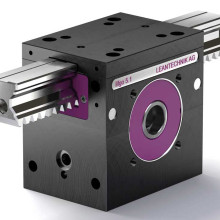
rack gear | Highly accurate for precise movements
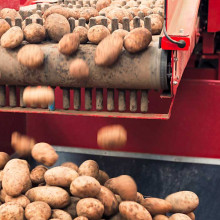
Potato harvester reliable again after conversion from freewheel
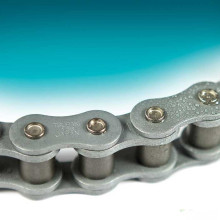
Drive and conveyor chain | Roller chains for industry
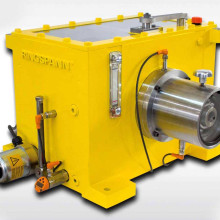
Freewheel clutch | Backstop and overrunning clutch

Roller chains: Select the correct drive and conveyor chain

Angela Struck is editor-in-chief of the development scout and freelance journalist as well as managing director of Presse Service Büro GbR in Ried.

